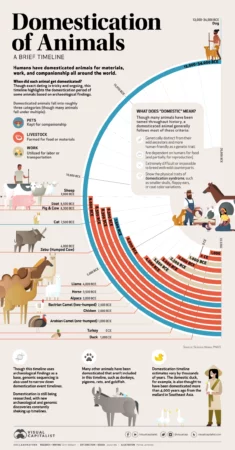- Berries as a case study for crop wild relative conservation, use, and public engagement in Canada. Berries could be an agrobiodiversity conservation flagship, at least in Canada. If only other types of crops, and countries, were that easy.
- The king of fruits. There’s a dark side to durian that’s thankfully not there with berries.
- Genome sequencing of up to 6,000-yr-old Citrullus seeds reveals use of a bitter-fleshed species prior to watermelon domestication. Neolithic Libyans used wild watermelons for their seeds, not flesh.
- Comparison of bioactive components and flavor volatiles of diverse cocoa genotypes of Theobroma grandiflorum, Theobroma bicolor, Theobroma subincanum and Theobroma cacao. Could use the wild relatives for tastier chocolate. Another potential flagship, surely.
- Akebia: A Potential New Fruit Crop in China. I’d totally try it. And not just because it’s called both “wild banana” and “chocolate vine.”
- Animal pollination increases stability of crop yield across spatial scales. Not just higher yields, greater yield stability too. Important for some of the above, and many other fruits.
- Estimating the environmental impacts of 57,000 food products. More nutritious foods tend to be more environmentally friendly too. But how many of these products include the above? I mean fruits, not pollinators.
Brainfood: Sweet potato in Polynesia, Land use in Jamaica, Himalayan Neolithic, Early modern Spanish ag, E Asian Neolithic double
- Sweet Potato on Rapa Nui: Insights from a Monographic Study of the Genus Ipomoea. Seeds could just maybe have got there by floating, but more likely sweet potato was introduced to Easter Island by people from other parts of Polynesia, perhaps not by the first arrivals though.
- The legacy of 1300 years of land use in Jamaica. European colonization led to deforestation. And no doubt the spread of sweet potato, but that’s another story. The constant is cassava.
- Prehistoric agricultural decision making in the western Himalayas: ecological and social variables. Large, socially diverse prehistoric sites had more diverse agriculture. At these high altitude anyway. The constant is barley.
- Early Austronesians Cultivated Rice and Millet Together: Tracing Taiwan’s First Neolithic Crops. That would be japonica rice and foxtail millet, which were brought to Taiwan from the SE coast of China.
- Millet, Rice, and Isolation: Origins and Persistence of the World’s Most Enduring Mega-State. Meanwhile, back in China, the adoption of agriculture drives state formation.
- A 16th-century biodiversity and crop inventory. 60 crop and livestock species, which doesn’t sound like enough. Alas, no sweet potato or rice, but some Setaria millet.
Brainfood: AnGR in the US, Cloning, Reindeer diversity, Lactose persistence evolution, Fish menus, Vanilla agroforestry, Pollinators in India & the US, Dogs & people
- Development and utilization of the United States gene bank collection. Of animals, that is: 1.15 million samples from 59,640 animals, representing 44 species of livestock, aquatic and insect genetic resources, 191 breeds and 369 subpopulations.
- Healthy cloned offspring derived from freeze-dried somatic cells. Another way to conserve in genebanks like the above, at least for mice.
- Genetic differentiation between coexisting wild and domestic Reindeer (Rangifer tarandus L. 1758) in Northern Eurasia. Now there’s better information to help decide how to conserve both in genebanks and outside, at least for reindeer.
- Dairying, diseases and the evolution of lactase persistence in Europe. Being able to digest milk didn’t help Neolithic people much. But not being able to digest milk during famines or plagues was really bad for them. Yeah but now we’re stuck with all that livestock.
- Signature of climate-induced changes in seafood species served in restaurants. Since 1880, the mean temperature preference of fish on Vancouver’s menus has increased by 3°C. Soon some will need genebanks, I guess. Or domestication.
- Win-win opportunities combining high yields with high multi-taxa biodiversity in tropical agroforestry. You don’t necessarily have to pay for higher vanilla yields with lower biodiversity. Good, because you can’t put everything in a genebank, I guess.
- Functional diversity of farmland bees across rural–urban landscapes in a tropical megacity. Oh look, another win-win!
- A review of management actions on insect pollinators on public lands in the United States. As in tropical megacities, removing invasives is an unalloyed good.
- Human Ecology: Special Issue on Dogs. Whether you’re a dog person or not, it’s hard to argue that any domesticated animal has engaged in a more diverse set of interactions with humans. Truly a win-win. But please, let’s not clone Fido.
Nibbles: CGIAR impacts, Innovative varieties, Sweet potato in PNG, Mexican food viz, Mango diversity, Lactase persistence, Tree planting, Indigenous sea gardens
- Average returns on agricultural R&D investment is 100%, says CGIAR.
- I wonder how many from this list of the most innovative plant varieties of 2020 can trace back to some CGIAR product. Or genebank.
- Which sweet potato varieties do consumers actually like in PNG?
- Cool visualizations of the relationships between Mexican crops and foods.
- One village, 100 mangoes. Visualize that.
- Don’t blame high food prices on war. Entirely, anyway.
- Lactase persistence is not due to the benefits of drinking milk. Entirely, anyway.
- A whole bunch of tools to help select trees to plant in Europe. The entirely correct URL for the climate matching tool is this one though.
- Why worry about any of that when you can have sea gardens, though?
Animal domestication through the ages
 Pretty good infographic on the history of animal domestication from the oddly named Visual Capitalist. References and a map would be good, but we mustn’t…ahem…look a gift horse in the mouth.
Pretty good infographic on the history of animal domestication from the oddly named Visual Capitalist. References and a map would be good, but we mustn’t…ahem…look a gift horse in the mouth.